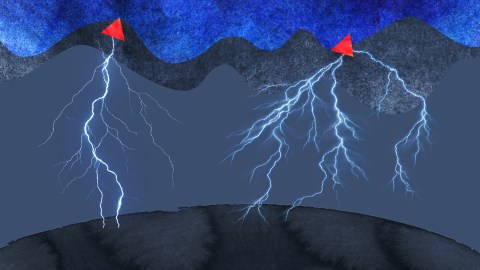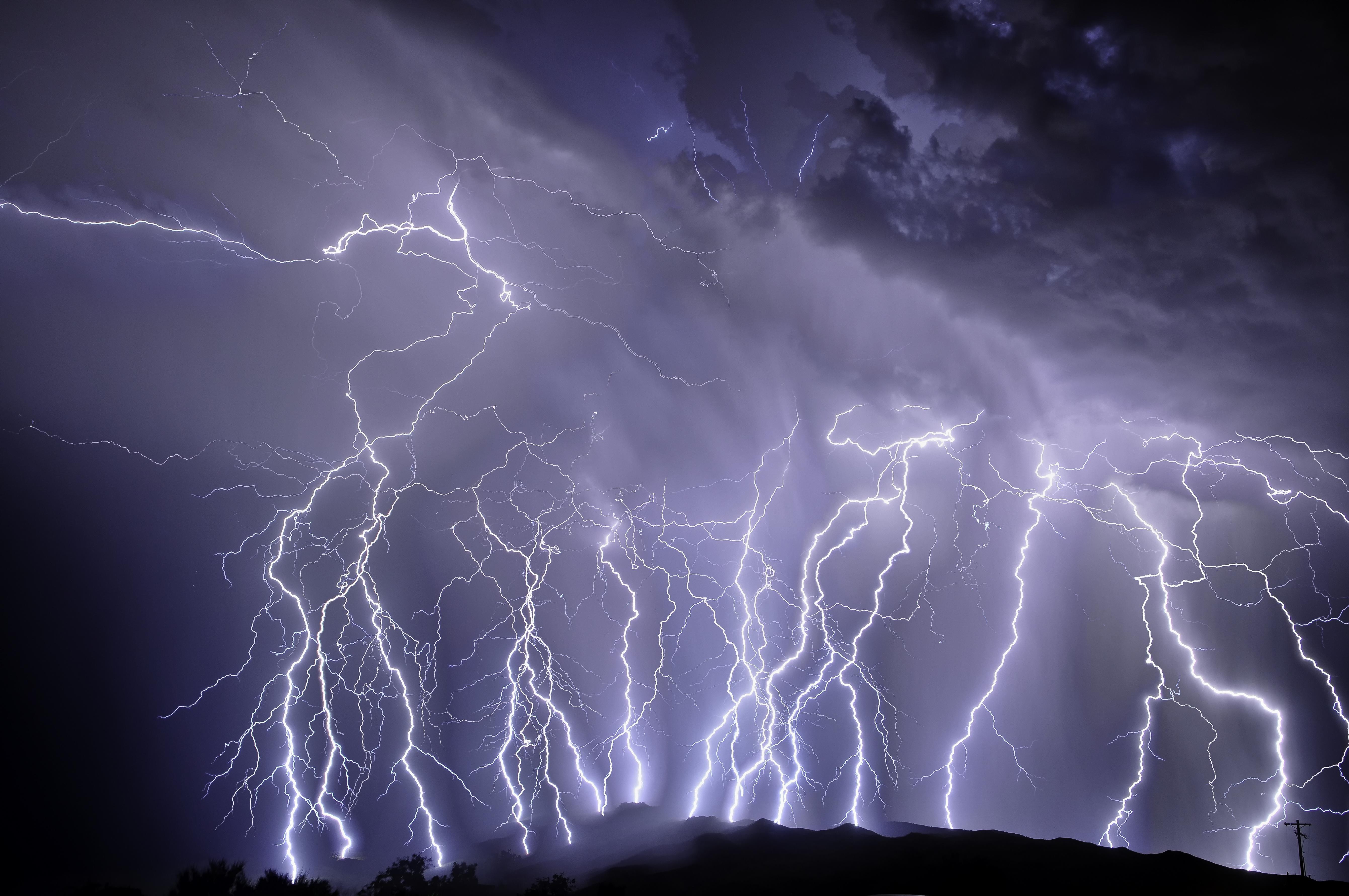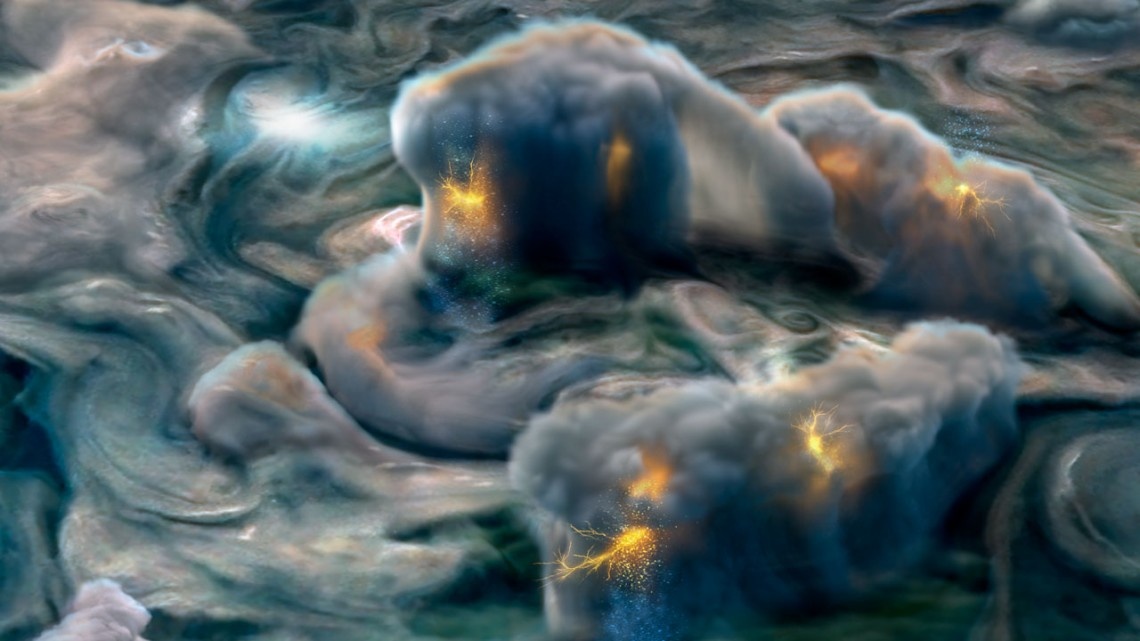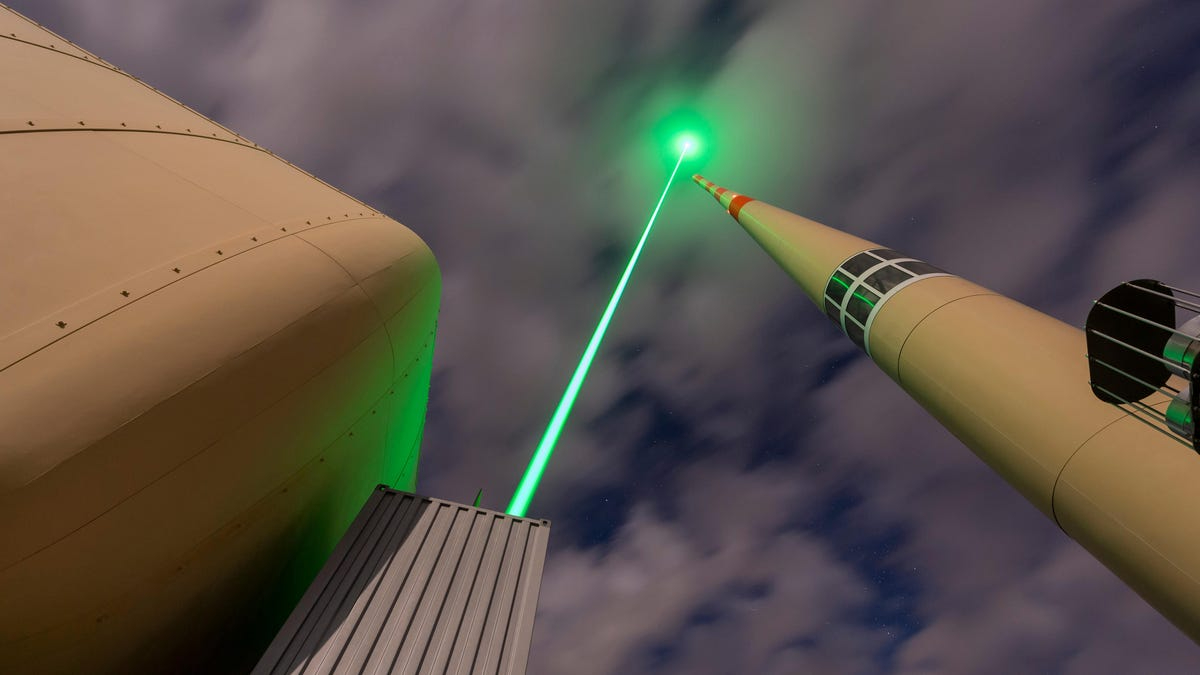To better study lightning, researchers are creating it with rockets

- Researchers use rockets to create and study lightning by launching them into stormy skies to establish conductive pathways between the earth and clouds.
- This method allows scientists to measure lightning under relatively controlled conditions, improving our understanding of the complex electrical behavior leading up to a lightning strike.
- A recently developed rocket design offers a new way to induce lightning.
Guiding a lightning bolt with a laser is an impressive feat, but it’s not the only manmade method to create lightning. Rocket launches can also stimulate strikes, carrying charge skyward from the earth to trigger a discharge, leaving behind a glowing plasma tube inviting more strokes. It’s impressive to watch. Here’s how it works.
The rocket
Rockets rising up into stormy weather are a natural target for lightning. Apollo 12 was struck twice just after liftoff from the pad.
But bringing down bolts from the heavens doesn’t require a rocket as big as Apollo. To come within striking distance of the storm, a rocket need only climb a few hundred meters—about 1,000 feet—so it can be small and simple. The rocket, shorter than a person, trails a thin copper wire connecting back to the ground, which creates a conductive pathway for electrical charge to travel between earth and sky. The electrical current in the cable can be continuously measured to observe the electrical phenomena leading up to the first discharge.
A patented new rocket design eschews the copper wire and chemically creates the lightning path. The rocket fuel is doped with small amounts of salt. Sodium chloride, calcium chloride, or cesium chloride is pulled through the motor, heated, and broken into charged ion components spewed out in the exhaust. The positively charged Cs, Ca, or Na atoms cool and bond with water molecules in the air, forming saltwater droplets. These droplets are far more electrically conductive than freshwater droplets, leaving a high-conductivity trail in the rocket’s wake.
The atmospheric electricity
Many rocket lightning experiments are carried out in Florida, which is full of attractive areas, while others are conducted in New Mexico, where mountains provide conducive launch points. When the sky becomes appropriately dark and stormy, electrical charge gathers in the cloud, creating an electrical field through the atmosphere.
In most cases, electrons gather near the bottom of thunderclouds, producing a negative net charge and attracting positive charge on the ground below. Conducting objects that poke up toward the sky will tend to build up concentrated positive charge, inviting the excess negative charge in the cloud to flow down and alleviate the imbalance. Both sides send out charged leaders—glowing sparks of broken down atmosphere—toward the other. Usually, the descending negative leaders are more impressive, while ascending positive leaders are small and hard to make out unless photographed at just the right moment.
As the wired rocket flies upward, an upward-going, positively-charged leader rides the conductive copper wire up toward the cloud. The very tip of the leader, or streamer, is a flickering tube of ionized atmospheric gas, where electrons stripped from nuclei in a plasma state create a region of high electrical conductivity. This purplish spark probes paths through the atmosphere, drawn toward the negative charge in the descending streamers above.
Most of the time leaders and streamers falter, fail to connect, and die out. The complexity of electrical phenomena makes predicting which will successfully connect nearly impossible.
The stroke
At the moment a positively charged streamer tip successfully connects with the negative streamer from the cloud’s leader, a complete conductive pathway is established between cloud and ground. An instant later a burst of electrons flow down the pathway, discharging from the cloud to the ground. The pathway lights up with current, producing a blinding flash and triggering the shockwave thunderclap.
The complicated electrical behavior leading up to the stroke is an ongoing research topic. While the discharge is quite obvious, researchers can piece together a more complex story of the events leading up to it by recording the electrical current coming down the rocket wire over time. For instance, a series of precursor pulses indicates currents that failed to even create leaders. A period of elevated current flow indicates the establishment of a leader, searching for connection. A gradual drop in current indicates a failed leader, while a steady or increasing current that finally leaps off scale is a leader making a connection and triggering a violent discharge.
The massive current of a discharge vaporizes the wire and heats it into a plasma. The tube of ionized metal remains highly conductive, inviting further strikes down the same path, visible to the eye as repeated flashes. High-speed video can resolve these as individual strikes traveling along the wire remnants.
Moving lightning research toward testable science
Like astronomy, the study of lightning is often an observational science. Complicated phenomena occur in the natural world, and researchers build instruments to measure them and then models to explain them. Rocket triggering brings the phenomena closer to laboratory testing under controlled conditions. Lightning can be induced and measured under particular quantifiable conditions—altitude, prevailing fields, electrical potential, and so forth—rather than just passively observed.
While rockets can act as airborne lightning rod, launching dozens of rockets each time a thundercloud grows tall isn’t practical. That’s especially true in locales like Florida where storms can occur every afternoon for several months. However, the simplicity, convenience, and proven effectiveness of rocket-guided lightning is a useful tool for researchers looking to learn more about the phenomenon, whether for practical purposes or out of scientific curiosity.





